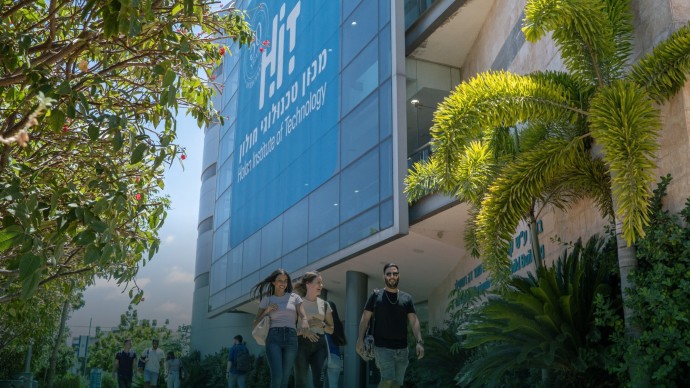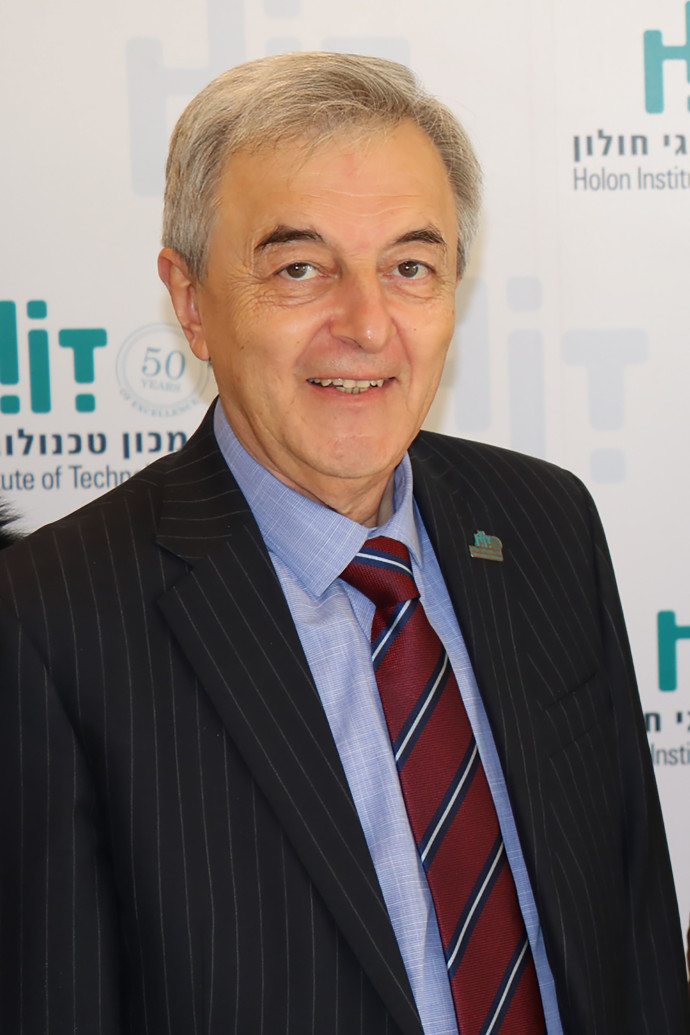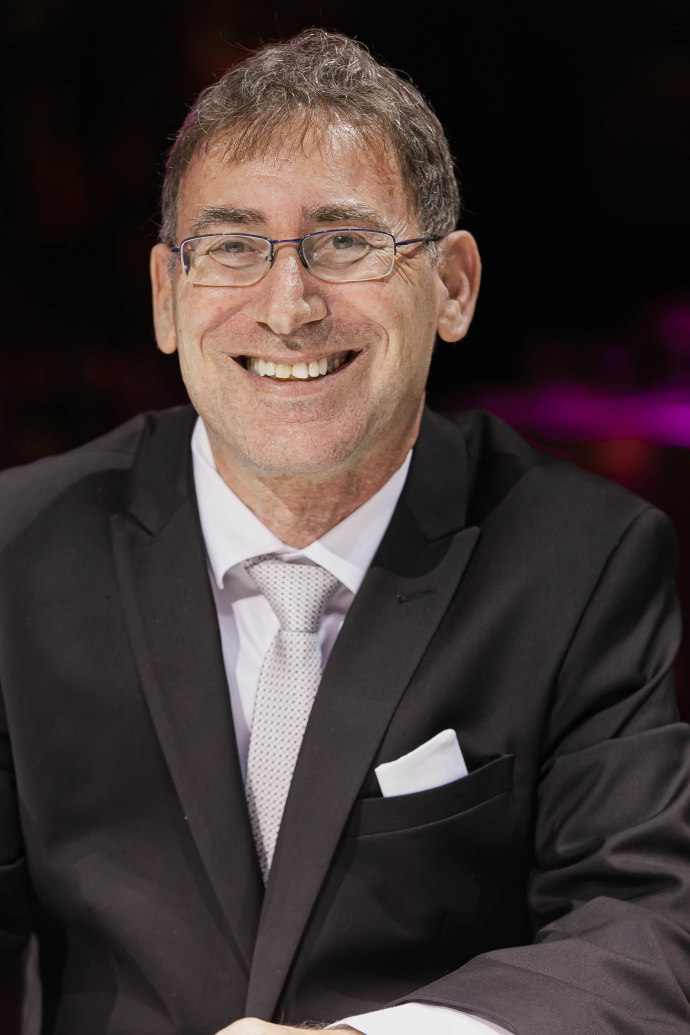In almost 26 years of living in Israel, I have traveled to Holon but a handful of times. Until my recent visit to the city, I did not know that Holon is Israel’s 10th most-populous city (196,292), has the second-largest industrial area of any city in the country, and received its name because of the sand dunes on which it was built – (hol means sand in Hebrew).
Most importantly, though, I did not know that Holon is home to one of Israel’s top hi-tech academic institution, the Holon Institute of Technology (HIT). After spending a morning at HIT, I can say that it is one of the best-kept academic secrets of the Start-Up Nation.
The leafy, low-key campus of HIT is tucked into a residential neighborhood in the midst of the city. Founded in 1969, the institute became a fully independent institution in 2002 and is home to more than 5,000 students.

HIT includes eight different faculties and independent departments that grant undergraduate and master’s degrees.
These include the Faculty of Sciences, which offers programs in Computer Science and Applied Mathematics; the Faculty of Electric and Electronics Engineering, whose graduates comprise 25% of Israel’s electrical engineers; the Faculty of Instructional Technologies, which teaches digital technologies for training and learning in diverse organizations; the Faculty of Industrial Engineering and Technology Management, which certifies engineers for diverse technical professions, and the Faculty of Design, which grants degrees in Industrial Design, Interior Design, and Visual Communications Design, all of which are combined with technology; the Department of Data Sciences, which awards master’s degrees in Data Science; and the unique Department of Digital Health, which grants a degree in Digital Medical Technologies, and will certify the new generation of medical technologists and the technology-equipped doctors of the future.
Last but not least is the School of Multidisciplinary Studies, which combines various fields of knowledge, introducing students to intellectual worlds and research approaches that go beyond what they study in their departmental programs.
Prof. Eduard Yakubov, the president of HIT, has been associated with the institute for 28 years and established its department of Applied Mathematics and its Faculty of Sciences. Yakubov says that he knows many students by name. “I see myself as a father to the students, not as their president,” says Yakubov, who maintains an open-door policy of meeting with students who seek his assistance. “HIT is a living, breathing entity,” he adds. “Students come not just to learn, but to live.”
HIT’s newest degree program is a B.Sc. degree in Digital Medical Technologies. The program was established by Dr. Rafael Barkan, the institute’s Vice President for Innovation Entrepreneurship and Internationalization. HIT’s program is the only program in Digital Health offered in Israel and is one of the very first programs of its kind in the world.
Developed in close collaboration with Israel’s leading hospitals and HMO’s, the three-year program, which began in Fall 2020, focuses on Artificial Intelligence, Big Data, Tele-Medicine, and Robotics, as well as Health and Medical Sciences based on Biology, Chemistry and Physics.
Graduates of the program will be integrated into the Bio-Med and Info-Med industries as health care data analysts and will assume leading positions in hospitals, HMOs, pharmaceutical companies, medical insurance companies, and start-ups and will be qualified to develop the technological infrastructure of the hospitals of the future. Students who wish to become physicians can continue after graduation in four-year medical school programs.
Prof. Yakubov notes that HIT’s influence goes beyond Holon and Israel and extends throughout the world. The EU’s Erasmus+ programs bring students to study at institutions of higher education around the world, including HIT. On the day I arrived at HIT, a delegation from Uzbekistan’s ministry of innovation had come to learn more about
HIT’s innovations in science and technology. It’s very common to see delegations from around the world visiting the HIT campus to learn, develop collaborations, and think together about new programs.
Many institutes teach science and technology, but what separates HIT from the others? HIT excels in applying practical skills in engineering, science and mathematics. One of its advantages is the final project in the third year of studies. Students work with hi-tech organizations finding solutions that no one has ever thought of.
HIT is rapidly growing. Today the institute offers 18 undergraduate and graduate degree programs with or without theses, compared to 12 that were available before COVID-19.
Goldberg, the institute’s self-effacing CEO, who served in the IDF for 23 years in various managerial capacities, has been affiliated with HIT since 2004 and was appointed CEO in 2016.
He is more interested in ticking off a few of the institute’s impressive statistics – a student population of 5,000, a 50-dunam campus, and over 17,000 graduates – than speaking about his accomplishments, but after a bit of pressing, he relates his goal: “My vision is to make higher education available to as many students as possible, and to continue to promote HIT’s academic programs and infrastructure, ensuring its recognition as a prominent research institution that is spearheading practical and academic technical knowledge.”
HIT’s campus is situated in the heart of the city and today has eight buildings. The physical campus will be enhanced with a student residence building that will include 472 beds and will be completed in October 2022. This will enable students from Israel’s periphery to pursue studies at HIT.
The student residential building will also help the Institute’s international students, who arrive each year as participants in the EU’s Erasmus+ programs, which brings students to study at institutions around the world, including HIT. Later this year, construction will begin on a building that will house the Digital Medical Technologies department.
With the construction of the Tel Aviv Light Rail line to Holon, HIT will become even more accessible to students in Israel’s center and will be a short ride away from Tel Aviv. The school maintains a close and positive relationship with the Holon municipality and has numerous educational partnerships. HIT’s “Mitzuya-Noar” (excellent youth) program offers advanced ninth-grade students the opportunity to begin their studies at the school, obtain a degree in five years, and then enter the IDF’s Academic Atudah (Reserve) program, enabling them to incorporate their military service with advanced academic studies.
Another program offered by the institute sends HIT students to schools throughout Holon, teaching children how to intelligently use Internet services and protect them from cyberbullying and offensive content and a third program in which students visit schools and teach students about ecology and green energy, including energy efficiency. The totality of these and other programs integrates HIT within the greater Holon community.
Hi-tech companies prize HIT graduates for the practical skills they have learned, says Goldberg. “Two weeks ago, we had an employment fair, with 60 companies exhibiting outdoors,” he says. “More than 90% of our graduates find hi-tech employment within six months of graduation.”
Beyond the institute’s high-level programs in mathematics, engineering, and the sciences, what makes HIT unique is its close-knit, family atmosphere. Goldberg meets with student representatives weekly – “the students call me ‘Shmeel’” – and more than a third of the staff have been working there since the institute’s early days. HIT invests a great deal of time and resources to provide remedial assistance for students who need reinforcement in their math and science studies.
Forty percent of the students at HIT are women, and the Institute has a special program that encourages excellence in hi-tech and engineering for women, with workshops in various fields such as networking, social media, and personal branding and offering scholarships to qualified female students. Almost 100 women join these programs each year, which are a leading cause of the increased female enrollment.
HIT is one of Israeli academia’s best-kept secrets, but once the word gets out about its academic achievements and collegial atmosphere, it won’t be a secret for long.
This article was written in cooperation with the Holon Institute of Technology.


